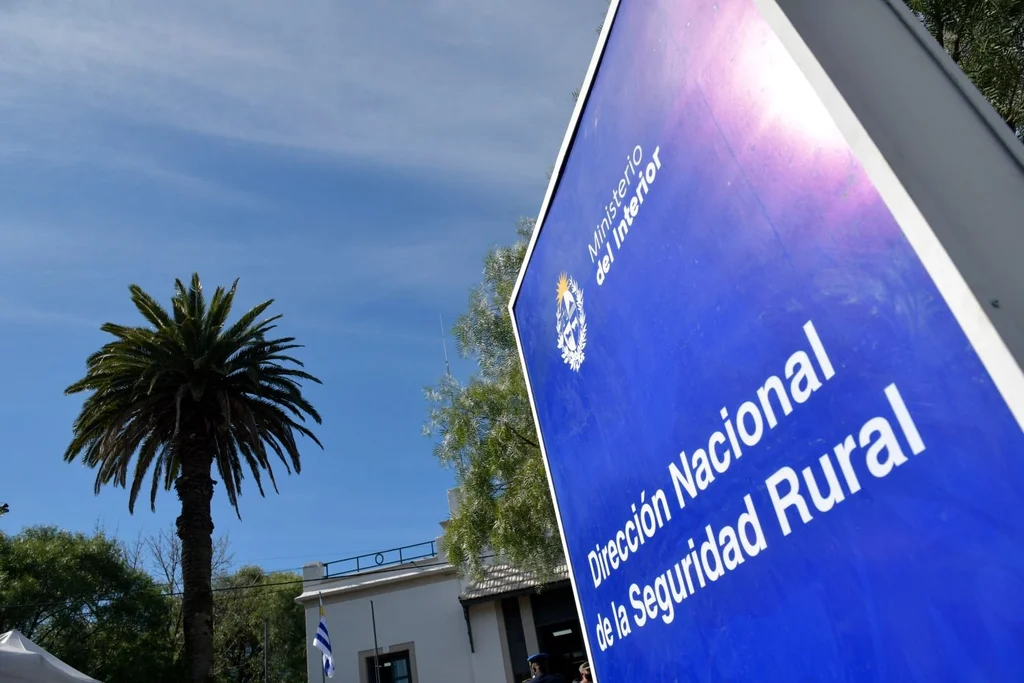In 2022 there were 695 fewer animals than in 2021 involved in rustling cases, but economic losses increased and complaints related to this crime rose 4% in the last quarter of the year, reported Willard González, chief commissioner of the National Directorate of Rural Security (DNSR), in an interview with The Observer.
The Ministry of the Interior shared the 2022 crime figures and as reported, the year closed with 315 complaints of rustling, 50% less than in 2019, the year in which 637 complaints related to this crime were registered. In 2021 there were 303 complaints, while in 2020 there were 426.
Analia Pereira
Willard González, director of the National Directorate of Rural Security.
How did 2022 end in terms of rural crimes?
In the last quarter of 2022 there was an increase in complaints compared to 2021although comparatively with 2020 there is still a decrease.
There is a decrease in the number of affected animals and complaints received compared to 2020. If we take into account that last year the values of cattle were extraordinary, the economic damage in 2022 was greater than in 2021.
How much was the economic damage of the crimes of rustling committed in 2022?
I do not have the data of the sum in money.
How many animals were affected by that crime?
In 2021 there were 3,659 animals affected by rustling and in 2022 there were 2,946. Different species are included: cattle, horses, sheep, goats and poultry. What used to be the theft of farmyard animals is now considered rustling. These days, for example, a claim of rustling was made in Canelones for some ducks.
Did the modalities of crime change?
Not. There are cases of rustling in which they kill the animals and take everythingor whatever they think is convenient, generally the meat that has the most muscle. And there are cases in which they take the animals and using different maneuvers they sell them; they end up entering the legal circuit taking advantage of some weaknesses in the system.
Cattle are put in caravans of those who appropriated them and in the case of sheep or horses, which have group traceability, they make documentary falsification and enter the legal circuit either at a fair or in a direct business from producer to producer. .
Have they arrested people for these cases?
Yes. Many times we start from documentary analysis of information from the National Livestock Identification System (SNIG), once the evidence is gathered, we inform the corresponding prosecutor, the situation is explained to him and the arrests are requested. When authorized (the arrest, the person) it is made available to the Prosecutor’s Office, which is the one that follows the case.
We always try to be in coordination when there are unusual cases, because rustling is not a common caseto explain and for the Prosecutor’s Office to understand what the maneuver was.
What sanctions are there for those who commit rustling?
The theft is a crime punishable by a prison sentence, beyond the fact that later (what happens) will depend on the agreements that the defense lawyers make with the Prosecutor’s Office. Measures are often imposed so that this person continues to be integrated into society but appealing to them not to commit another crime, or the same one.

Diego Battiste
The National Directorate for Rural Security has brigades in all departments.
What are the areas of the country with the most complaints?
We changed the focus of prevention a bit and continue to target Canelones, the border with Lavalleja and San José mainly, because it is in those areas where there are more cases.
In 2020 Canelones exceeded 350 annual complaints for rustling and in 2022 ended with 194. It is the place with the greatest affectation in number of complaints, although it may not be the most affected in number of animals per fact.
We orient the resources to improve the quality of life of the people who live in those places, because the rustling is added to human damage, because these people have to be aware of what can happen at night.
How does the DNSR work in border areas?
The address has national jurisdiction. In each department there is a departmental brigade with which we maintain daily contact.
On some occasions we have requested the help of the Air Force or the Departmental Brigade of Durazno, which have drone equipment.
There are some areas that are complex due to (their approach to) the border, such as Rocha on the Chuy border, or Artigas.
What cases do you remember from 2022?
In Cuareim, in Artigas, they killed 10 cows in a single day. A producer, touring his coast, found the remains of 10 dead cattle, most of the meat had been taken away. In this case, personnel from the Prefecture were attacked with firearms while they were patrolling the Cuareim River. That is quite a complex area on the border between Brazil and Uruguay. The Cuareim is a very navigable river in which crimes such as rustling have been committed.
Another case was that of a very important complaint that began as a lack of cattle in Lavalleja, with a significant number of animals affected. From the lack of cattle it became rustling and to this day there are two formalized people and others summoned.
(The Observer reported on this case for which a woman and five men were arrested accused of stealing cattle, tampering with their identifications and selling them at cattle fairs).
How do you discover the falsification of documentation?
in each department income must be controlled at livestock fairs. The documentation is analyzed to see that it is complete and that what is transferred with that property and transit guide is in accordance with what is declared in that document, which is still an affidavit, because the producers sign at the bottom of the guide.
Given the presumption of an irregularity, the documents are studied and, if warranted, the Prosecutor’s Office is informed, or else a file is initiated with Dicose (Livestock Comptroller Division), which is the administrative authority.
Are animals seized?
Yes, for example when the producer puts up for sale animals whose ownership cannot be justified. They are seized until the Prosecutor’s Office decides their delivery or final destination, which can be slaughter or auction, to take away a bit of responsibility from whoever remains the custodian of those animals.
Does the DNSR have a field set up for those seizures?
They generally stay in places where they agree with a producer. For example, now we have animals in a field belonging to the National Institute of Colonization, we have others in a fairground, others with a producer in Rocha, and in a Ministry of the Interior property in Artigas. When they are seized, the Police make tours to see that they are in good condition.
How many animals were seized in 2022?
The number is varied, but for example, the Departmental Brigade of Salto seized 600 animals in a single case at the beginning of 2022 and in another case, 600 animals that had irregularly entered a property on the border between Paysandú and Salto were seized by order of the Prosecutor’s Office. Later, as the property is tested, the animals are withdrawn.
In 2023 were animals seized?
Yes, there are few animals but some brigades have already made seizures.
*The original version of this note mentioned a 4% annual increase in complaints, said increase occurred in the third quarter of the year. At an annual level, between 2022 and 2021 the complaints for this crime fell 7%.







